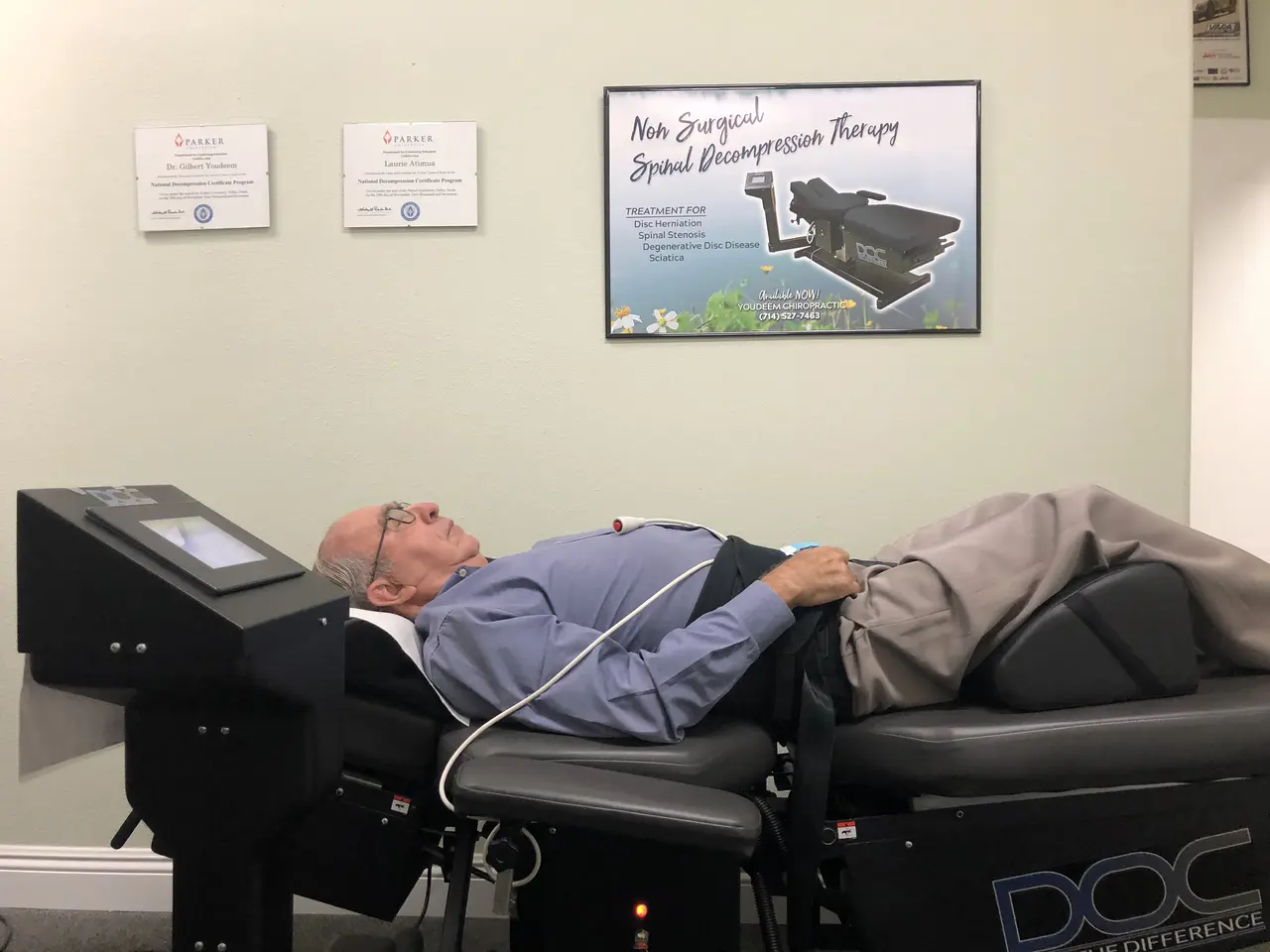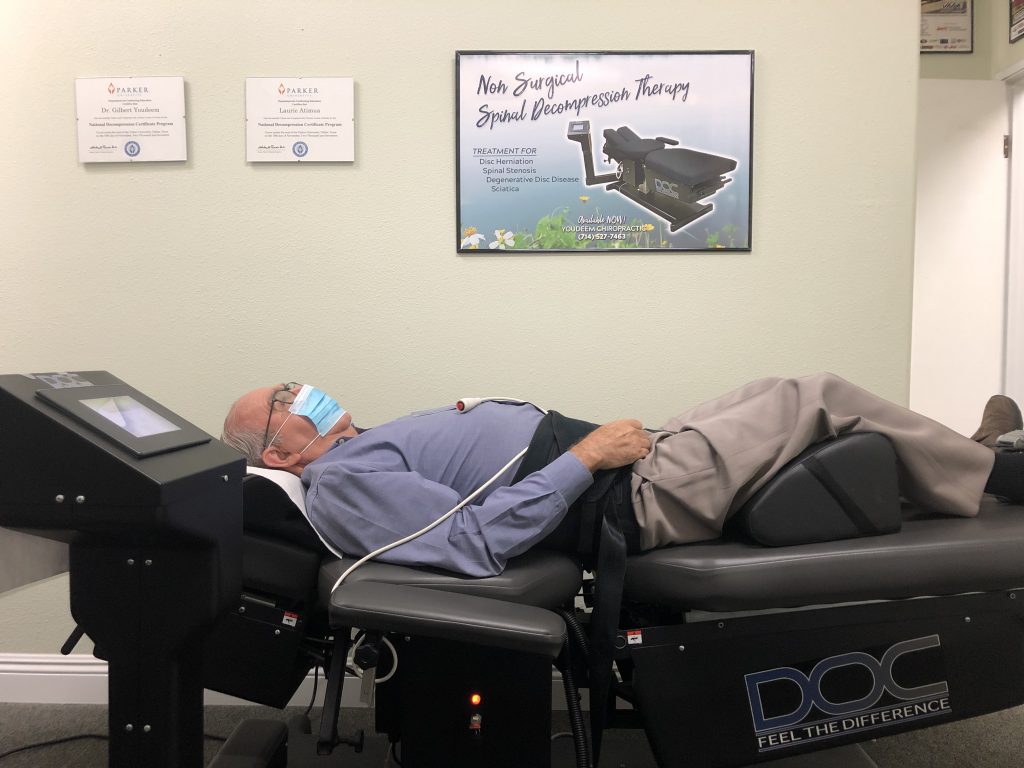The Hidden Advantages of Disc Decompression Over Traditional Surgery at Youdeem Chiropractic
What is disc decompression?
Disc decompression is a non-surgical treatment that helps alleviate pain and discomfort in the spine. This procedure aims to reduce pressure on the discs in your spine, allowing them to heal naturally. When compared to traditional surgery, disc decompression is less invasive and typically has a shorter recovery time. During the treatment, Dr. Youdeem uses a state of the art specialized table to gently stretch and decompress the spine, promoting healing and relieving symptoms such as numbness, tingling, and pain.
Common issues with traditional surgery
Traditional surgery for disc issues can come with risks like infection, blood clots, or nerve damage. Recovery time can be lengthy, with potential complications like pain or limited mobility. Additionally, traditional surgery may require hospital stays and have higher chances of needing repeat procedures.
Benefits of disc decompression at our office
Disc decompression offers numerous benefits over traditional surgery for treating spinal disc issues. Here are some advantages to consider:
- Dr. Youdeem’s expertise and experience with non-surgical spinal decompression make him a trusted authority in the field. His dedication to patient-centered care, combined with his technical proficiency and commitment to innovation, has positioned him as a leader in providing effective, non-invasive solutions for spinal disorders.
- Non-invasive: Disc decompression is a non-surgical procedure that does not involve any incisions or removal of tissue.
- Faster recovery: Patients typically experience a quicker recovery time compared to traditional surgery, allowing them to return to their daily activities sooner.
- Pain relief: Disc decompression can help alleviate pain and discomfort associated with spinal disc issues, improving overall quality of life.
- Preserves natural structure: Unlike surgery, disc decompression aims to maintain the natural structure of the spine, reducing the risk of potential complications.
- Cost-effective: In many cases, disc decompression may be a more cost-effective treatment option compared to traditional surgery, making it a favorable choice for many patients.
How does disc decompression work?
During disc decompression, your spine is gently stretched to reduce pressure on the discs. This process helps the discs retract and allows more nutrients and oxygen to flow into them, promoting healing. The reduction in pressure also helps relieve pain by decreasing irritation of the nerves.
Understanding the procedure
Disc decompression involves a non-invasive procedure that aims to relieve pressure on the spinal discs, reducing pain and improving mobility. During the procedure, our specialized state of the art device gently stretches the spine, creating negative pressure within the disc. This negative pressure can help retract any herniated or bulging disc material, reducing compression on the nerves. Over time, this can promote the natural healing processes of the body. Disc decompression is generally considered safer than traditional surgery, as it does not involve significant incisions or removal of bone or tissue. The procedure is typically performed on an outpatient basis, and many patients experience relief after a few sessions.
Step-by-step guide to disc decompression
Disc decompression is a minimally invasive treatment option for back pain that can provide relief without the need for traditional surgery. Here is a step-by-step guide to understand the process better:
-
Diagnosis: Dr. Youdeem will assess your condition through physical examination and imaging tests to determine if disc decompression is suitable for you.
-
Preparation: Before the procedure, you will be briefed on what to expect and any necessary precautions to take.
-
Procedure: During disc decompression, a specialized tool is used to gently stretch and decompress the affected spinal discs, reducing pressure on the nerves and promoting healing.
-
Recovery: After the treatment, you may experience some soreness or mild discomfort, but this typically subsides quickly. Follow any post-procedure instructions provided by Dr. Youdeem.
-
Benefits: Disc decompression offers advantages over traditional surgery, such as minimal risk, faster recovery time, and preservation of surrounding tissue.
Understanding the steps involved can help you make an informed decision about whether disc decompression is the right choice for managing your back pain.
Recovery process after disc decompression
The recovery process after disc decompression is usually quicker compared to traditional surgery. Most patients can go back to their regular activities within a few days to a week after the procedure. Home therapy may be recommended to help strengthen the back muscles and improve flexibility. It’s crucial to follow Dr. Youdeem’s instructions carefully to ensure a smooth recovery process.
Risks and complications to consider
Before opting for disc decompression or traditional surgery, it’s important to know the risks and potential complications. Here are a few key points to consider:
- Disc decompression procedures typically have fewer risks compared to traditional surgery like reduced infection risk and quicker recovery time.
- However, there’s still a possibility of experiencing temporary soreness or muscle spasms post-procedure.
- It’s essential to consult with Dr. Youdeem to determine the best option for your specific condition and medical history.
Success rates of disc decompression
Disc decompression often boasts a success rate of around 70% to 90% in relieving symptoms associated with spinal disc issues such as herniation or bulging discs. This non-invasive procedure aims to reduce pressure on the spinal nerves and promote natural healing of the disc. Multiple sessions may be required for optimal results, but many patients find significant improvement in their pain levels and mobility after undergoing disc decompression therapy.
Comparing disc decompression to traditional surgery
Disc decompression is a less invasive treatment than traditional surgery and can lead to faster recovery times. With disc decompression, there is typically less pain and scarring compared to traditional surgery. Studies have shown that disc decompression is just as effective as traditional surgery in treating certain spinal conditions. Additionally, patients who undergo disc decompression are often able to resume their daily activities sooner than those who undergo traditional surgery.



